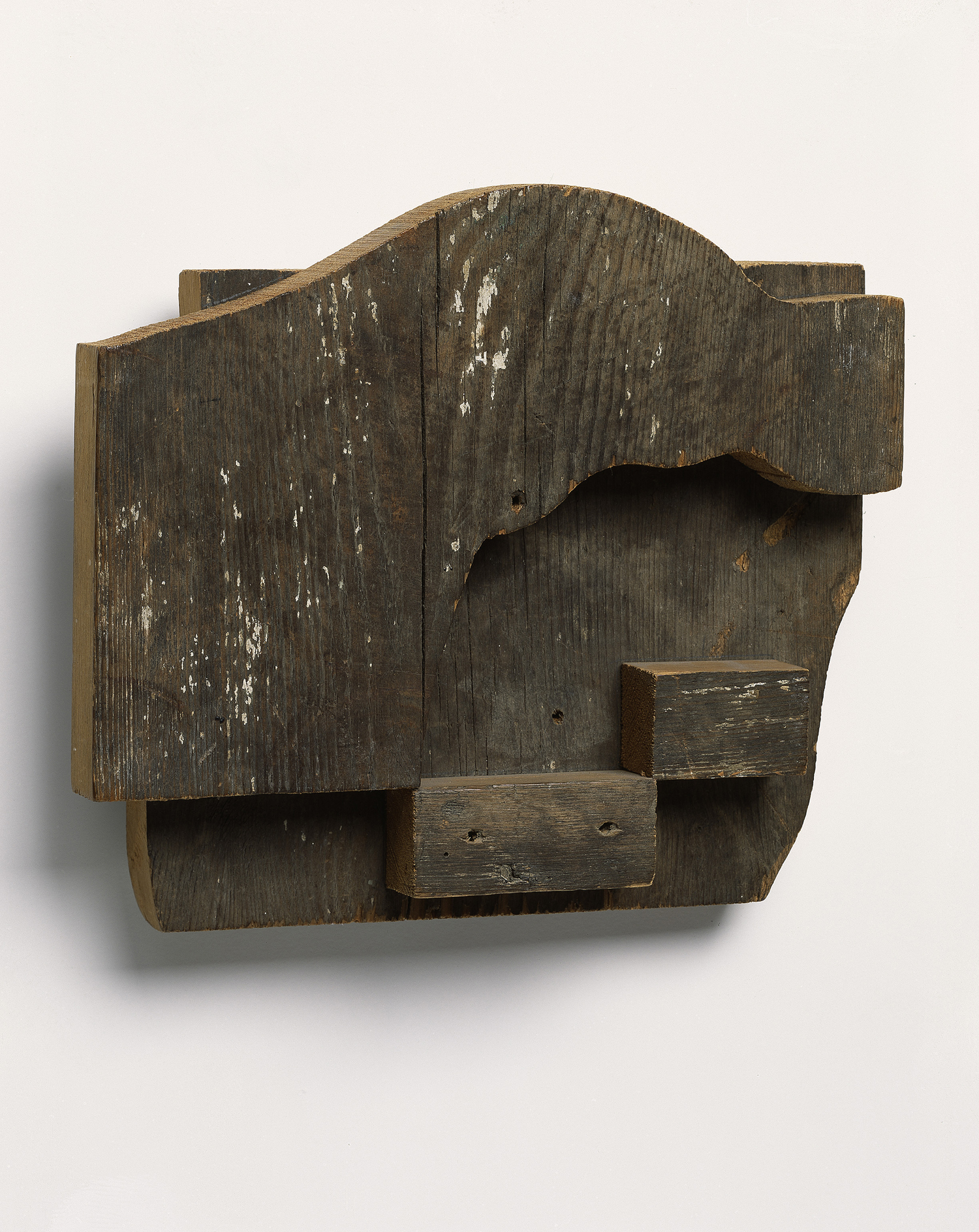Hans Arp
Dada relief, 1917
Artist
Hans Arp
Title
Dada relief
Year of creation
1917
Technology and dimensions
wood, 24.5 x 28 x 6 cm
Year of acquisition
1979
The acquisition of the three reliefs by Hans Arp and the three works by Kurt Schwitters represented a significant enrichment of the collection of the Neue Nationalgalerie, as these important material montages from Dadaism were able to close a previously existing gap in the presentation of 20th century art .
Hans Arp was one of the co-founders of the Dadaist movement: in 1915 he came to Zurich to find new artistic answers to the events of the time with other like-minded people. “Disgusted by the slaughter of the World War in 1914, we devoted ourselves to the fine arts in Zurich. While the thunder of the guns rumbled in the distance, we sang, painted, glued and wrote poetry with all our might. We were looking for an elementary art that would heal people from the madness of time, and a new order that would create the balance between heaven and hell.” In Zurich in 1915, Arp also met his future wife, Sophie Taeuber, who worked with her textiles Designs have had a lasting impact on his work: “The clear calm of the vertical and horizontal compositions influenced the baroque, diagonal dynamics of my abstract 'designs'. A gentle silence flowed from their color and form constructions.” They decided “to no longer use oil paint in their pictures. We wanted to avoid any reminder of the oil paint. The oil painting seemed to us to belong to an arrogant, presumptuous world."
This is how the extensive series of his important wooden reliefs, determined equally by order and chance, began at this time, around 1916/17, which were too artistic in their ambivalent expression between shape and symbol. poetic form signals of a consciously intuitive search for symbols. For him, a decisive inspiration for these screwed-on relief assemblies, the parts of which Arp had sawn out by a carpenter based on preliminary drawings or paper cuts, came from nature's wealth of forms. This is how he reported on a stay in Ascona in April 1917: “In Ascona I drew with brush and ink broken branches, roots, grasses and stones that the lake had washed up on the beach. I simplified these forms and united their 'essence' in moving ovals, symbols of the eternal transformation and evolution of bodies."
It is the lively sound of the forms that motivates Arp to create his compositions, which seem playful but actually represent carefully balanced structures . The rhythm of organically tense form progressions creates a fluid alternation of differently staggered surface segments, which, despite their strong abstraction, are reminiscent of impulses from nature or the landscape; That's why Arp didn't speak of abstract works, but deliberately used the term "concrete art". Determined only by the moving outline and consistent color, the individual form, with its slightly irregular borders that are always oriented towards the plastic roundness, seems like a simple, elementary sign of organic being. It is only when these differently sized, colored “shadows” are superimposed that a richly related network of tensions develops, which - usually related to a center - derives its moving intensity primarily from the constantly occurring change in the relationship between figure and ground.
With the self-contained wooden discs, Arp creates a comparatively open field in which forms slide into one another or stand out as individual shape formations as if in a never-ending process. Only the surrounding contour of the base plate and the courses of the upper layer are visible in their entirety and thus form calm zones that provide support, while the intermediate forms are integrated into the conflict of overlap, potential fragmentation and thus assertion. Despite all the fundamental harmony of these shape transformations, which are supported by a very pure color and forces of growth, the superordination and subordination create an inner drama that symbolizes something like the swaying back and forth of life energies. It is the conflict between bulkiness and vibration that gives these surface layers by Hans Arp their special appeal.
Fritz Jacobi
